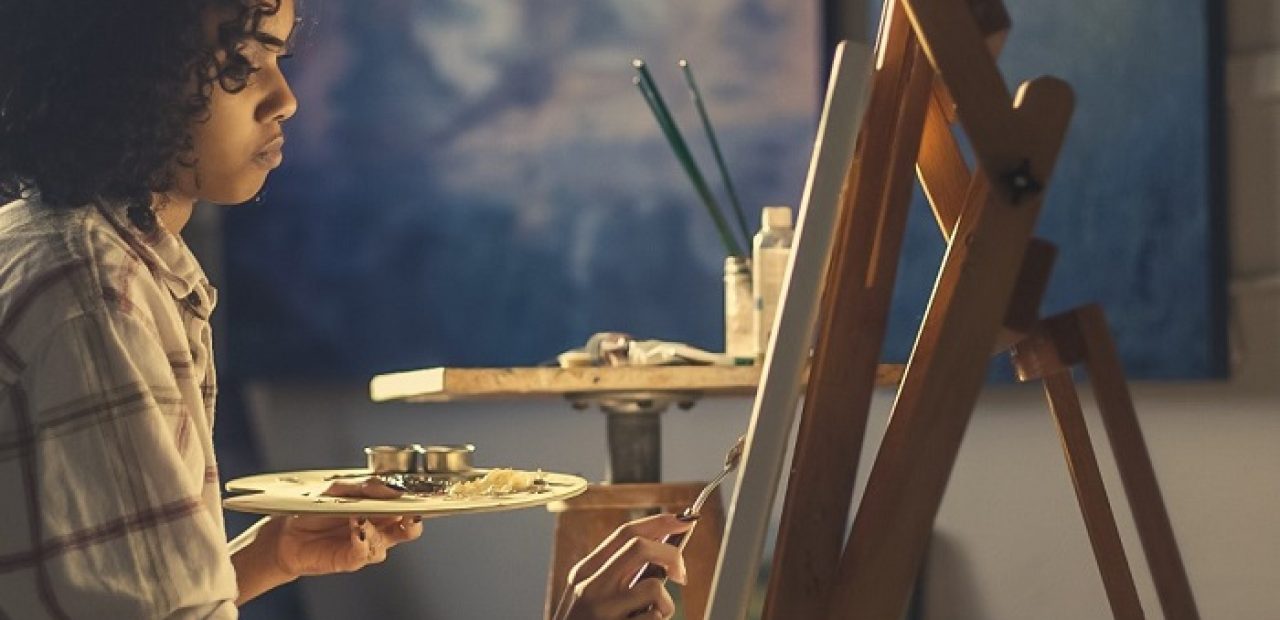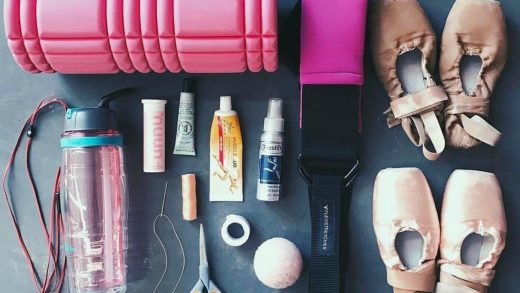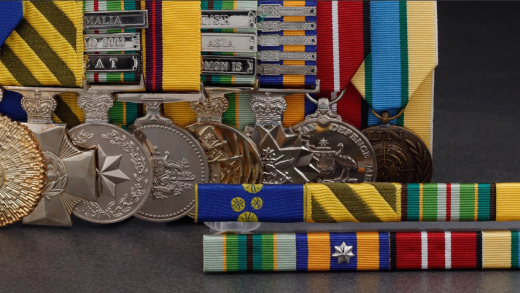Watercolour Paper: Dip Your Toe into the World of Art
Contents
What is Watercolour Paper?
Watercolour papers are one of the most commonly used visual art supplies. As the name implies, this is a paper onto which the artist can apply watercolour paints, dyes and pigments. Generally speaking, this paper can be made of wood pulp or from a wood pulp and cotton fibres mixture.
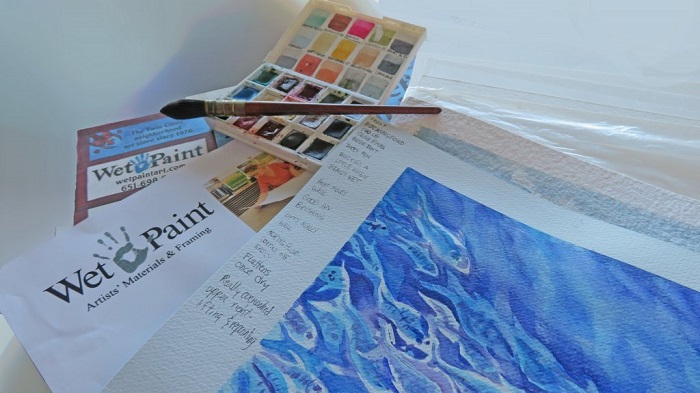
Source: doodlewash.com
Types of Watercolour Paper
Nowadays, there are many types of paper available on the market that can be used with watercolours. An important thing to know about these commonly used and extremely popular visual art supplies is that they can come in three surfaces. In other words, watercolour paper can come as hot-pressed (HP), cold-pressed (CP) and rough. Out of all these types, the hot-pressed watercolour papers are considered the smoothest type. Those with medium texture are cold-pressed watercolour paper, and the rough types have the roughest texture.
Regardless of the paper used, what matters most for an artist is to follow the basics in order to be successful. For instance, if planning to use lots of water when painting, the artist should stretch the paper prior to painting in order to avoid warping. Otherwise, the sheet can wrinkle and form ridges that are almost impossible to remove. Consequently, when working on heavyweight paper and using only a little bit of water, the artist doesn’t have to stretch the paper.
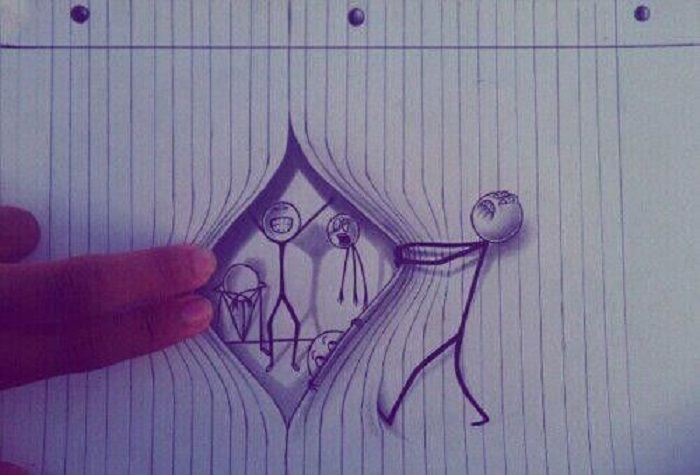
Source: pinterest.com.au
Loose Paper vs. Pad vs. Block vs. Boards
Loose Paper
The most important thing you need to know about loose paper for watercolours is that it is available in sheets and in rolls. Although sheets are easier to use, some artists prefer the roll version of this paper as it allows them to cut the precise piece of paper.
Pad
Pad paper can be spiral, bound or glued along one edge with a card cover. Usually, the cover is adorned with the paper’s brand. The cover should also give the artist the needed paper information.
Block
The block is usually glued around four edges, however, the smaller section in one of the corners should be left unglued. Once done with the picture, the artist should insert a blade into the unglued part all around the four edges in order to reveal a fresh sheet underneath.
Board
The board is a watercolour paper that is usually fixed to a card. The artist doesn’t need to stretch the paper, but boards cannot take as much water are stretched sheets.
How to Choose the Right GSM?
GSM stands for grams per square metre. Watercolour paper is measured by the weight of 500 sheets of paper at the imperial size (76 x 56cm). The general rule is the bigger the number, the thicker the paper. The best choice will mainly depend on the artist’s needs. For instance, a 190 GSM paper can look like two sheets of photocopy paper which in fact is quite thin. A 300 GSM paper is considered a watercolour paper of medium thickness. This paper, in particular, is considered a general-purpose, while the 638 GSM paper is the thickest and it looks like cardboard. This paper is recommended for artists who plan on using lots of water when creating their art pieces.
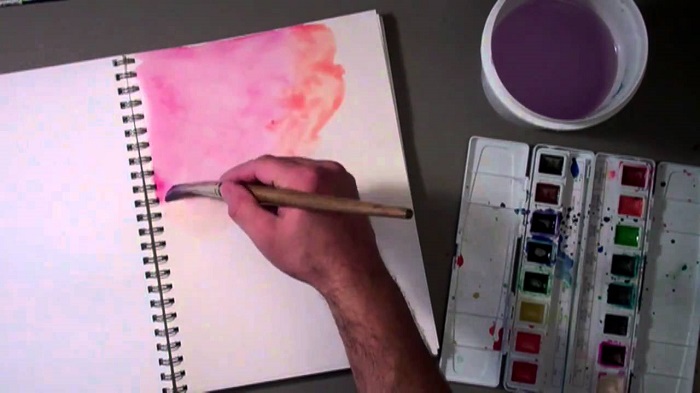
Source: youtube.com
Some Interesting Painting Techniques
Bleeding Wet on Wet
According to experienced artists, a good way to blend colours into one another is through blooming. For this purpose, the artist needs to take a good amount of water to dip the brush and apply it to the paper. When the stroke is wet enough, the artist should add another colour with the same amount of water on the brush. This technique is really easy and it allows artists to play with colours.
Wet Through Dry
When applying a dry and more saturated stroke of colour on the paper, the artists can pull from that stroke with very little water. Before the stroke is dry, it is recommended taking a wet brush and pulling the colour out from the darker stroke. How far the artist can pull the colour mainly depends on how dry the initial stroke of colour is.
These are just some of the most common techniques used by artists for creating their magnificent pieces. Of course, there are many other techniques that can be learned and perfected.
Rub Off
The rub off or erase technique is used when you want to correct a mistake or adjust the lighting on a particular place. And this can be done easily. Once the paint is completely dry, the artist can brush on a swatch of clear water (in the desired shape). But before dabbing the water away with the help of a paper towel, the artist should let the water sit for a moment for better results. Slowly but surely, the colour will start to lift off.
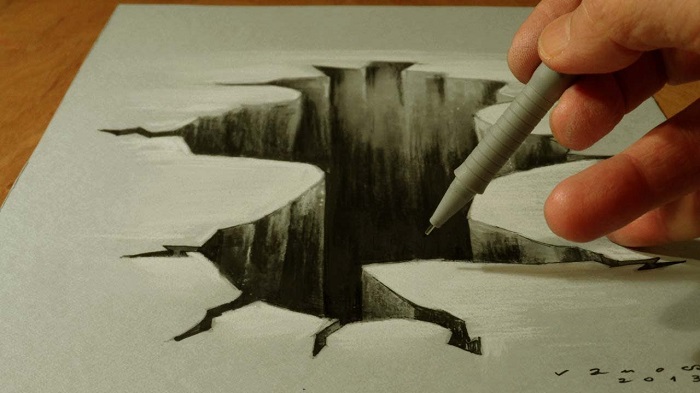
Source: youtube.com
How to Make 3D Art On Paper Step By Step?
Although watercolour paper can be used for pencil sketching, there are also some other types of art papers that artists can find more useful for this drawing technique. But besides paper, the artist should also stock on some other visual art tools like art pencils . Once they have the right supplies, the artist should observe and learn the many techniques and steps of drawing in 3D.

